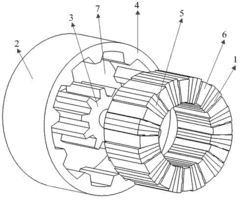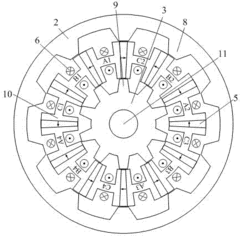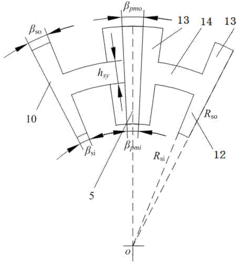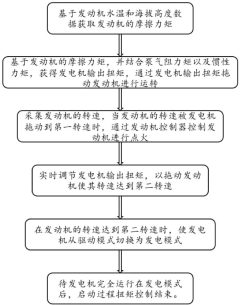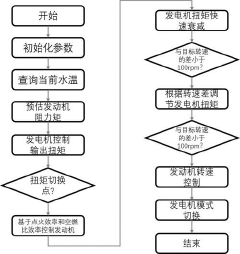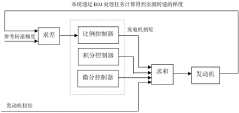The impact of EREV technology on conventional fueling industries
AUG 14, 20259 MIN READ
Generate Your Research Report Instantly with AI Agent
Patsnap Eureka helps you evaluate technical feasibility & market potential.
EREV Technology Overview
Extended Range Electric Vehicles (EREVs) represent a significant advancement in automotive technology, bridging the gap between conventional internal combustion engine vehicles and fully electric vehicles. EREVs combine an electric drivetrain with a small internal combustion engine, which serves as a generator to extend the vehicle's range beyond what is typically achievable with battery power alone.
The core technology of EREVs centers around a sophisticated powertrain system that integrates electric motors, a high-capacity battery pack, and a range-extending gasoline engine. This configuration allows the vehicle to operate in pure electric mode for a certain distance, typically 30-50 miles, before the gasoline engine engages to generate electricity and extend the driving range.
One of the key components of EREV technology is the advanced battery management system. This system optimizes the use of stored electrical energy, manages charging cycles, and ensures the longevity of the battery pack. Lithium-ion batteries are commonly used in EREVs due to their high energy density and relatively long lifespan.
The range extender, usually a small gasoline engine, is another crucial element of EREV technology. Unlike traditional hybrid vehicles, the engine in an EREV does not directly drive the wheels but instead acts as an on-board generator. This allows for a more efficient and compact design, as the engine can be optimized to run at its most efficient speed for electricity generation.
Power electronics play a vital role in EREV systems, managing the flow of electricity between the battery, electric motors, and range extender. Advanced inverters and converters ensure smooth power delivery and efficient energy conversion, contributing to the overall performance and efficiency of the vehicle.
EREV technology also incorporates regenerative braking systems, which capture kinetic energy during deceleration and convert it into electrical energy to recharge the battery. This feature significantly enhances the overall efficiency of the vehicle, particularly in urban driving conditions with frequent stops and starts.
The control systems in EREVs are highly sophisticated, employing complex algorithms to optimize the interplay between electric and gasoline power sources. These systems continuously monitor various parameters such as battery charge level, driving conditions, and energy demand to determine the most efficient operating mode.
As EREV technology continues to evolve, improvements in battery technology, power electronics, and lightweight materials are expected to further enhance the performance and efficiency of these vehicles. The ongoing development of EREV technology represents a significant step towards more sustainable transportation solutions, offering a practical compromise between the benefits of electric vehicles and the convenience of traditional gasoline-powered cars.
The core technology of EREVs centers around a sophisticated powertrain system that integrates electric motors, a high-capacity battery pack, and a range-extending gasoline engine. This configuration allows the vehicle to operate in pure electric mode for a certain distance, typically 30-50 miles, before the gasoline engine engages to generate electricity and extend the driving range.
One of the key components of EREV technology is the advanced battery management system. This system optimizes the use of stored electrical energy, manages charging cycles, and ensures the longevity of the battery pack. Lithium-ion batteries are commonly used in EREVs due to their high energy density and relatively long lifespan.
The range extender, usually a small gasoline engine, is another crucial element of EREV technology. Unlike traditional hybrid vehicles, the engine in an EREV does not directly drive the wheels but instead acts as an on-board generator. This allows for a more efficient and compact design, as the engine can be optimized to run at its most efficient speed for electricity generation.
Power electronics play a vital role in EREV systems, managing the flow of electricity between the battery, electric motors, and range extender. Advanced inverters and converters ensure smooth power delivery and efficient energy conversion, contributing to the overall performance and efficiency of the vehicle.
EREV technology also incorporates regenerative braking systems, which capture kinetic energy during deceleration and convert it into electrical energy to recharge the battery. This feature significantly enhances the overall efficiency of the vehicle, particularly in urban driving conditions with frequent stops and starts.
The control systems in EREVs are highly sophisticated, employing complex algorithms to optimize the interplay between electric and gasoline power sources. These systems continuously monitor various parameters such as battery charge level, driving conditions, and energy demand to determine the most efficient operating mode.
As EREV technology continues to evolve, improvements in battery technology, power electronics, and lightweight materials are expected to further enhance the performance and efficiency of these vehicles. The ongoing development of EREV technology represents a significant step towards more sustainable transportation solutions, offering a practical compromise between the benefits of electric vehicles and the convenience of traditional gasoline-powered cars.
Market Demand Analysis
The market demand for Extended Range Electric Vehicles (EREVs) has been steadily growing, driven by increasing environmental concerns and the push for sustainable transportation solutions. This technology bridges the gap between conventional internal combustion engine vehicles and fully electric vehicles, offering a compromise that addresses range anxiety while reducing emissions.
Consumer interest in EREVs has been particularly strong in urban and suburban areas, where daily commutes can be completed on electric power alone, with the range extender providing peace of mind for longer trips. Market research indicates that early adopters of EREV technology tend to be environmentally conscious consumers who are willing to pay a premium for greener transportation options.
The global EREV market is projected to experience significant growth in the coming years. Factors contributing to this growth include government incentives for low-emission vehicles, improving battery technology, and increasing consumer awareness of environmental issues. Additionally, as charging infrastructure continues to expand, the appeal of EREVs is likely to broaden to a wider consumer base.
However, the impact of EREV technology on conventional fueling industries is complex and multifaceted. While the adoption of EREVs is expected to reduce overall demand for gasoline, it may not lead to an immediate or drastic decline in fuel consumption. This is because EREVs still rely on gasoline for extended range operation, albeit at a reduced rate compared to conventional vehicles.
The transition to EREVs is likely to create new market opportunities for the energy sector. Fuel stations may need to adapt by offering both electric charging and conventional fueling options. This hybrid approach could lead to the development of new business models and revenue streams for traditional fuel retailers.
For oil companies and refineries, the gradual shift towards EREVs may necessitate a reevaluation of long-term strategies. While the demand for gasoline may decrease, there could be increased demand for other petroleum products used in the manufacturing of EREVs, such as plastics and lubricants.
The automotive industry is also experiencing significant changes due to EREV technology. Many major manufacturers are investing heavily in EREV development, recognizing the potential for this technology to serve as a transitional solution between conventional and fully electric vehicles. This shift is driving innovation in powertrain design, battery technology, and energy management systems.
In conclusion, the market demand for EREV technology reflects a growing consumer desire for more sustainable transportation options that do not compromise on convenience. While this trend poses challenges for conventional fueling industries, it also presents opportunities for adaptation and innovation across the energy and automotive sectors.
Consumer interest in EREVs has been particularly strong in urban and suburban areas, where daily commutes can be completed on electric power alone, with the range extender providing peace of mind for longer trips. Market research indicates that early adopters of EREV technology tend to be environmentally conscious consumers who are willing to pay a premium for greener transportation options.
The global EREV market is projected to experience significant growth in the coming years. Factors contributing to this growth include government incentives for low-emission vehicles, improving battery technology, and increasing consumer awareness of environmental issues. Additionally, as charging infrastructure continues to expand, the appeal of EREVs is likely to broaden to a wider consumer base.
However, the impact of EREV technology on conventional fueling industries is complex and multifaceted. While the adoption of EREVs is expected to reduce overall demand for gasoline, it may not lead to an immediate or drastic decline in fuel consumption. This is because EREVs still rely on gasoline for extended range operation, albeit at a reduced rate compared to conventional vehicles.
The transition to EREVs is likely to create new market opportunities for the energy sector. Fuel stations may need to adapt by offering both electric charging and conventional fueling options. This hybrid approach could lead to the development of new business models and revenue streams for traditional fuel retailers.
For oil companies and refineries, the gradual shift towards EREVs may necessitate a reevaluation of long-term strategies. While the demand for gasoline may decrease, there could be increased demand for other petroleum products used in the manufacturing of EREVs, such as plastics and lubricants.
The automotive industry is also experiencing significant changes due to EREV technology. Many major manufacturers are investing heavily in EREV development, recognizing the potential for this technology to serve as a transitional solution between conventional and fully electric vehicles. This shift is driving innovation in powertrain design, battery technology, and energy management systems.
In conclusion, the market demand for EREV technology reflects a growing consumer desire for more sustainable transportation options that do not compromise on convenience. While this trend poses challenges for conventional fueling industries, it also presents opportunities for adaptation and innovation across the energy and automotive sectors.
Current State and Challenges
The current state of Extended Range Electric Vehicle (EREV) technology presents both significant advancements and notable challenges. EREVs have gained traction in recent years as a bridge between conventional internal combustion engine vehicles and fully electric vehicles. These vehicles combine an electric motor with a small internal combustion engine, allowing for extended driving range and reduced range anxiety compared to pure electric vehicles.
In terms of technological progress, EREVs have seen improvements in battery capacity, energy density, and charging efficiency. Modern EREVs can typically achieve an all-electric range of 30-50 miles before the gasoline engine engages, which is sufficient for most daily commutes. This advancement has contributed to increased consumer interest and adoption rates in various markets.
However, the EREV technology faces several challenges that impact its widespread adoption and potential disruption of conventional fueling industries. One primary challenge is the higher initial cost compared to traditional vehicles, primarily due to the complex dual powertrain system and advanced battery technology. This cost differential remains a significant barrier for many consumers, despite potential long-term savings in fuel costs.
Another challenge lies in the infrastructure requirements. While EREVs can utilize existing gasoline stations for extended range, the need for charging infrastructure remains crucial for maximizing their electric capabilities. The limited availability of charging stations, especially in rural areas, continues to be a constraint on EREV adoption.
From a global perspective, the development and adoption of EREV technology vary significantly across regions. Countries like China and some European nations have shown strong support through incentives and regulations, driving faster adoption. In contrast, other regions lag due to factors such as limited government support, consumer preferences, or existing infrastructure limitations.
The impact on conventional fueling industries is becoming increasingly apparent. As EREV technology advances and adoption grows, traditional gasoline stations are facing the need to adapt. Some are beginning to incorporate electric charging stations alongside conventional fuel pumps, while others are exploring partnerships with electric vehicle manufacturers or charging network providers.
However, the transition is not uniform across all markets. In regions where EREV adoption is slower, conventional fueling industries have been less affected, maintaining their traditional business models. This disparity creates a complex landscape for global fuel providers, who must navigate varying rates of technological disruption across different markets.
Looking ahead, the challenges for EREV technology include further reducing costs, improving battery technology for longer all-electric ranges, and addressing the environmental impact of battery production and disposal. Additionally, as the technology matures, there is a growing need for standardization in charging infrastructure and protocols to ensure interoperability across different EREV models and brands.
In terms of technological progress, EREVs have seen improvements in battery capacity, energy density, and charging efficiency. Modern EREVs can typically achieve an all-electric range of 30-50 miles before the gasoline engine engages, which is sufficient for most daily commutes. This advancement has contributed to increased consumer interest and adoption rates in various markets.
However, the EREV technology faces several challenges that impact its widespread adoption and potential disruption of conventional fueling industries. One primary challenge is the higher initial cost compared to traditional vehicles, primarily due to the complex dual powertrain system and advanced battery technology. This cost differential remains a significant barrier for many consumers, despite potential long-term savings in fuel costs.
Another challenge lies in the infrastructure requirements. While EREVs can utilize existing gasoline stations for extended range, the need for charging infrastructure remains crucial for maximizing their electric capabilities. The limited availability of charging stations, especially in rural areas, continues to be a constraint on EREV adoption.
From a global perspective, the development and adoption of EREV technology vary significantly across regions. Countries like China and some European nations have shown strong support through incentives and regulations, driving faster adoption. In contrast, other regions lag due to factors such as limited government support, consumer preferences, or existing infrastructure limitations.
The impact on conventional fueling industries is becoming increasingly apparent. As EREV technology advances and adoption grows, traditional gasoline stations are facing the need to adapt. Some are beginning to incorporate electric charging stations alongside conventional fuel pumps, while others are exploring partnerships with electric vehicle manufacturers or charging network providers.
However, the transition is not uniform across all markets. In regions where EREV adoption is slower, conventional fueling industries have been less affected, maintaining their traditional business models. This disparity creates a complex landscape for global fuel providers, who must navigate varying rates of technological disruption across different markets.
Looking ahead, the challenges for EREV technology include further reducing costs, improving battery technology for longer all-electric ranges, and addressing the environmental impact of battery production and disposal. Additionally, as the technology matures, there is a growing need for standardization in charging infrastructure and protocols to ensure interoperability across different EREV models and brands.
Existing EREV Solutions
01 EREV powertrain and control systems
Extended Range Electric Vehicles (EREVs) utilize advanced powertrain and control systems to optimize the use of electric and combustion engines. These systems manage power distribution, battery charging, and overall vehicle efficiency, allowing for extended driving range and improved fuel economy.- EREV powertrain and control systems: Extended Range Electric Vehicles (EREVs) utilize advanced powertrain and control systems to optimize the use of electric and combustion engines. These systems manage power distribution, battery charging, and overall vehicle efficiency, enabling longer driving ranges and improved performance compared to traditional electric vehicles.
- Battery management and charging strategies for EREVs: EREV technology incorporates sophisticated battery management systems and charging strategies to maximize battery life and efficiency. These systems monitor battery health, optimize charging cycles, and manage power flow between the battery and other vehicle components, ensuring optimal performance and longevity of the electric powertrain.
- Integration of renewable energy sources in EREV charging: EREV technology explores the integration of renewable energy sources for vehicle charging. This includes the development of smart charging systems that can prioritize the use of solar, wind, or other renewable energy sources when available, reducing the carbon footprint of EREVs and enhancing their environmental benefits.
- EREV communication and connectivity systems: Advanced communication and connectivity systems are integral to EREV technology. These systems enable vehicle-to-grid (V2G) interactions, real-time data exchange for performance optimization, and integration with smart city infrastructure, enhancing the overall efficiency and user experience of EREVs.
- EREV range prediction and optimization algorithms: EREV technology incorporates sophisticated algorithms for range prediction and optimization. These algorithms analyze various factors such as driving patterns, terrain, weather conditions, and traffic to accurately predict vehicle range and optimize energy usage, helping drivers plan their trips more effectively and reduce range anxiety.
02 Battery management and charging strategies
EREV technology incorporates sophisticated battery management systems and charging strategies. These systems monitor battery health, optimize charging cycles, and manage power flow between the battery and other vehicle components to maximize range and battery lifespan.Expand Specific Solutions03 Energy recovery and regenerative braking
EREVs employ energy recovery systems, including regenerative braking, to capture and store energy that would otherwise be lost during deceleration or braking. This recovered energy is used to recharge the battery, extending the vehicle's electric range and improving overall efficiency.Expand Specific Solutions04 Intelligent driving modes and user interfaces
EREV technology incorporates intelligent driving modes and user interfaces that allow drivers to optimize their vehicle's performance. These systems provide real-time information on energy consumption, range estimation, and charging status, enabling drivers to make informed decisions about their driving behavior and energy usage.Expand Specific Solutions05 Integration with smart grid and V2G technologies
EREVs are designed to integrate with smart grid systems and vehicle-to-grid (V2G) technologies. This allows for bi-directional power flow between the vehicle and the electrical grid, enabling features such as grid stabilization, demand response, and optimized charging based on grid conditions and energy prices.Expand Specific Solutions
Key Industry Players
The EREV technology market is in a growth phase, with increasing adoption and investment from major automotive players. The market size is expanding rapidly, driven by growing environmental concerns and stricter emissions regulations. Technologically, EREV systems are maturing, with companies like GM, Cummins, and LG Energy Solution leading development. These firms are advancing battery technology, powertrain efficiency, and system integration. However, the technology is not yet fully mature, with ongoing research in areas such as battery longevity, charging infrastructure, and overall system optimization. The competitive landscape is diverse, including traditional automakers, battery manufacturers, and emerging tech companies, indicating a dynamic and evolving market.
GM Global Technology Operations LLC
Technical Solution: GM's EREV technology, exemplified by the Chevrolet Volt, combines a battery-powered electric motor with a gasoline engine. This system allows for pure electric driving for short distances and seamless transition to gasoline power for longer trips. GM's EREV vehicles typically offer 40-50 miles of all-electric range before the gasoline engine engages[1]. The company has invested heavily in battery technology, aiming to reduce costs and increase energy density. GM's Ultium battery platform is designed to be flexible and scalable, potentially adaptable for EREV applications[2]. The company is also exploring advanced power electronics and thermal management systems to optimize EREV efficiency and performance[3].
Strengths: Established brand, extensive manufacturing capabilities, and significant R&D resources. Weaknesses: Potential cannibalization of traditional vehicle sales, dependency on battery technology advancements.
Cummins, Inc.
Technical Solution: Cummins, traditionally known for diesel engines, has been adapting its expertise to EREV technology. Their approach focuses on developing range extenders and power generation systems for electric vehicles. Cummins' EREV solutions typically involve compact, efficient engines or fuel cells that can provide consistent power to charge batteries or directly power electric drivetrains[12]. The company is investing in advanced control systems that optimize the interplay between electric and conventional power sources. Cummins is also exploring the use of alternative fuels, such as hydrogen and natural gas, in their range extenders to further reduce emissions[13]. Their EREV technology aims to provide a bridge between conventional powertrains and fully electric solutions, particularly for medium and heavy-duty applications.
Strengths: Extensive experience in power generation and engine technology, strong presence in commercial and industrial markets. Weaknesses: Less established in passenger vehicle market, potential challenges in transitioning from traditional engine manufacturing.
Core EREV Innovations
Flux switching permanent magnet motor suitable for extended range electric vehicle
PatentActiveCN104506011A
Innovation
- Adopting a composite rotor structure and H-shaped modular stator core design, an independent magnetic field is formed through an inner and outer two-layer air gap structure and alternating tangentially magnetized permanent magnets, and a three-phase annular winding is used to improve the torque output capability. and heat dissipation performance to reduce the pulsation of positioning torque.
Torque control method and system in starting process of extended-range hybrid power system and vehicle
PatentPendingCN117962856A
Innovation
- By collecting engine water temperature and altitude data, the friction torque is obtained, and combined with the pump resistance torque and inertia moment, the generator output torque is adjusted in real time, the engine speed is controlled, the generator is switched from drive mode to power generation mode in a timely manner, and the torque alternation process is optimized.
Fuel Industry Adaptation
The fuel industry is facing significant challenges as Extended Range Electric Vehicle (EREV) technology gains traction. Traditional fuel providers must adapt to this shifting landscape or risk obsolescence. Many major oil companies are diversifying their portfolios by investing in renewable energy sources and electric vehicle charging infrastructure.
Some fuel retailers are partnering with electric vehicle manufacturers to install charging stations at existing gas stations. This strategy allows them to maintain their physical presence while catering to the growing electric vehicle market. Additionally, these partnerships often involve loyalty programs that incentivize customers to use both fuel and charging services.
Fuel companies are also exploring alternative revenue streams within their existing infrastructure. Convenience stores attached to gas stations are being expanded and upgraded to offer a wider range of products and services. This shift aims to capitalize on the increased dwell time of electric vehicle owners during charging sessions.
Research and development efforts within the fuel industry are focusing on advanced biofuels and synthetic fuels. These alternatives aim to reduce carbon emissions while still utilizing existing distribution networks and vehicle technologies. Some companies are investing in hydrogen fuel cell technology as a potential long-term solution for heavy-duty vehicles and long-distance transportation.
The industry is also adapting its workforce to meet the changing demands. Retraining programs are being implemented to equip employees with skills related to electric vehicle charging, renewable energy systems, and advanced fuel technologies. This proactive approach helps maintain employment levels while transitioning to new business models.
Fuel companies are increasingly engaging in policy discussions and lobbying efforts to shape regulations around electric vehicles and alternative fuels. They aim to ensure a gradual transition that allows for the coexistence of traditional and new energy sources during the adaptation period.
Data analytics and digital technologies are being leveraged to optimize fuel distribution networks and predict demand patterns. This approach helps companies streamline their operations and reduce costs as they navigate the changing market dynamics.
Some fuel retailers are partnering with electric vehicle manufacturers to install charging stations at existing gas stations. This strategy allows them to maintain their physical presence while catering to the growing electric vehicle market. Additionally, these partnerships often involve loyalty programs that incentivize customers to use both fuel and charging services.
Fuel companies are also exploring alternative revenue streams within their existing infrastructure. Convenience stores attached to gas stations are being expanded and upgraded to offer a wider range of products and services. This shift aims to capitalize on the increased dwell time of electric vehicle owners during charging sessions.
Research and development efforts within the fuel industry are focusing on advanced biofuels and synthetic fuels. These alternatives aim to reduce carbon emissions while still utilizing existing distribution networks and vehicle technologies. Some companies are investing in hydrogen fuel cell technology as a potential long-term solution for heavy-duty vehicles and long-distance transportation.
The industry is also adapting its workforce to meet the changing demands. Retraining programs are being implemented to equip employees with skills related to electric vehicle charging, renewable energy systems, and advanced fuel technologies. This proactive approach helps maintain employment levels while transitioning to new business models.
Fuel companies are increasingly engaging in policy discussions and lobbying efforts to shape regulations around electric vehicles and alternative fuels. They aim to ensure a gradual transition that allows for the coexistence of traditional and new energy sources during the adaptation period.
Data analytics and digital technologies are being leveraged to optimize fuel distribution networks and predict demand patterns. This approach helps companies streamline their operations and reduce costs as they navigate the changing market dynamics.
Environmental Impact
The adoption of Extended Range Electric Vehicle (EREV) technology has significant implications for the environment, particularly in comparison to conventional internal combustion engine vehicles. EREVs combine the benefits of electric propulsion with the extended range capabilities of traditional fuel systems, resulting in a complex environmental impact profile.
One of the primary environmental advantages of EREV technology is the reduction in direct emissions during operation. When running on electric power, EREVs produce zero tailpipe emissions, contributing to improved air quality in urban areas. This is particularly beneficial in reducing local pollutants such as nitrogen oxides and particulate matter, which have direct health impacts on populations.
However, the environmental benefits of EREVs are not without caveats. The production of electricity used to charge these vehicles still has an environmental footprint, which varies depending on the energy mix of the grid. In regions heavily reliant on fossil fuels for electricity generation, the overall emissions reduction may be less significant compared to areas with a higher proportion of renewable energy sources.
The manufacturing process of EREVs, particularly the production of batteries, also carries environmental considerations. The extraction and processing of raw materials for batteries, such as lithium and cobalt, can have substantial environmental impacts, including habitat disruption and water pollution. However, advancements in battery technology and recycling processes are gradually mitigating these concerns.
From a lifecycle perspective, EREVs have the potential to significantly reduce greenhouse gas emissions compared to conventional vehicles. Studies have shown that even when accounting for production and end-of-life disposal, EREVs can achieve lower overall emissions, especially in regions with cleaner electricity grids.
The impact on conventional fueling industries is multifaceted. As EREV adoption increases, there is likely to be a gradual reduction in demand for traditional fossil fuels. This shift could lead to decreased emissions from the extraction, refining, and distribution of petroleum products. However, it may also result in economic challenges for regions heavily dependent on the fossil fuel industry.
The transition to EREV technology also presents opportunities for the development of more sustainable fueling infrastructure. This includes the expansion of charging networks powered by renewable energy sources, potentially leading to a more distributed and resilient energy system for transportation.
In conclusion, while EREV technology offers significant environmental benefits, particularly in terms of reducing direct emissions and overall greenhouse gas impact, its full environmental implications are complex and dependent on various factors including energy sources, manufacturing processes, and lifecycle considerations. The transition to this technology represents a significant shift in the environmental impact of personal transportation, with both challenges and opportunities for sustainability.
One of the primary environmental advantages of EREV technology is the reduction in direct emissions during operation. When running on electric power, EREVs produce zero tailpipe emissions, contributing to improved air quality in urban areas. This is particularly beneficial in reducing local pollutants such as nitrogen oxides and particulate matter, which have direct health impacts on populations.
However, the environmental benefits of EREVs are not without caveats. The production of electricity used to charge these vehicles still has an environmental footprint, which varies depending on the energy mix of the grid. In regions heavily reliant on fossil fuels for electricity generation, the overall emissions reduction may be less significant compared to areas with a higher proportion of renewable energy sources.
The manufacturing process of EREVs, particularly the production of batteries, also carries environmental considerations. The extraction and processing of raw materials for batteries, such as lithium and cobalt, can have substantial environmental impacts, including habitat disruption and water pollution. However, advancements in battery technology and recycling processes are gradually mitigating these concerns.
From a lifecycle perspective, EREVs have the potential to significantly reduce greenhouse gas emissions compared to conventional vehicles. Studies have shown that even when accounting for production and end-of-life disposal, EREVs can achieve lower overall emissions, especially in regions with cleaner electricity grids.
The impact on conventional fueling industries is multifaceted. As EREV adoption increases, there is likely to be a gradual reduction in demand for traditional fossil fuels. This shift could lead to decreased emissions from the extraction, refining, and distribution of petroleum products. However, it may also result in economic challenges for regions heavily dependent on the fossil fuel industry.
The transition to EREV technology also presents opportunities for the development of more sustainable fueling infrastructure. This includes the expansion of charging networks powered by renewable energy sources, potentially leading to a more distributed and resilient energy system for transportation.
In conclusion, while EREV technology offers significant environmental benefits, particularly in terms of reducing direct emissions and overall greenhouse gas impact, its full environmental implications are complex and dependent on various factors including energy sources, manufacturing processes, and lifecycle considerations. The transition to this technology represents a significant shift in the environmental impact of personal transportation, with both challenges and opportunities for sustainability.
Unlock deeper insights with Patsnap Eureka Quick Research — get a full tech report to explore trends and direct your research. Try now!
Generate Your Research Report Instantly with AI Agent
Supercharge your innovation with Patsnap Eureka AI Agent Platform!
